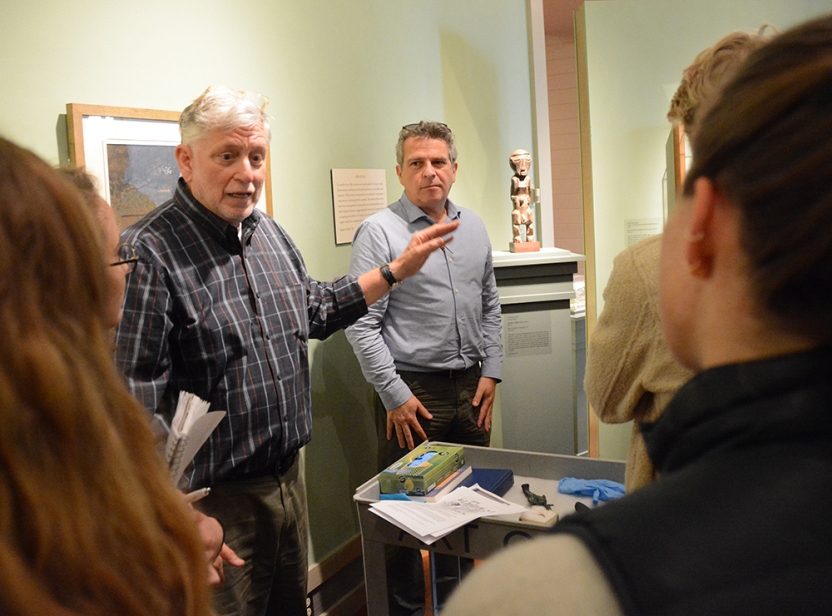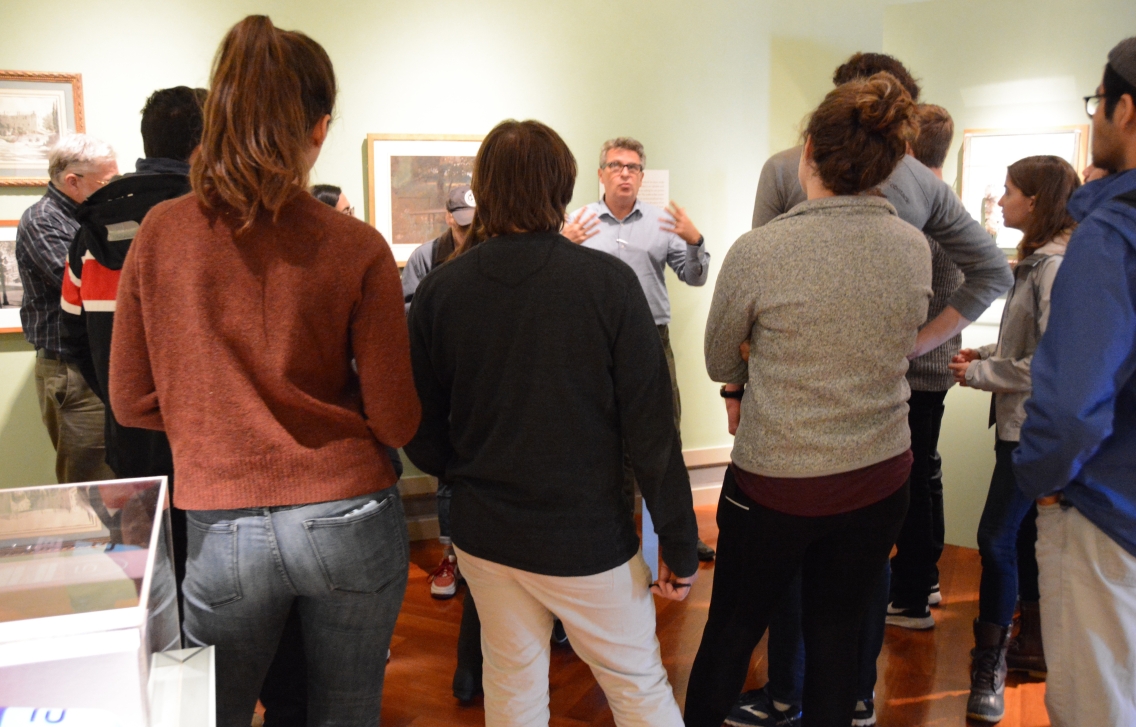New Course Investigates Art and Religion of Ancient Egypt

MIDDLEBURY, Vt. – Here is a 3,000-year-old object from ancient Egypt. What can you say about it? What period is it from? Where might it have been found? What is its religious significance?
Undergraduates in a new interdisciplinary course at Middlebury College are expected to speak about ancient Egyptian objects they have never seen before, as in the example above. “In the end it’s not really about any one specific object. It’s about the ideas behind the object,” explains Professor Pieter Broucke. “Once students have a grasp of the concepts, they can apply their understanding to any ancient Egyptian object they encounter, whether in a book or a museum or a gallery.”
The course is being team-taught by Broucke, Middlebury’s director of the arts and curator of ancient art at the College museum, and Shalom Goldman, the Pardon Tillinghast Professor of Religion. “Twenty years from now when these same students take a friend or their kids to a museum, they will have a strong sense of the meaning, the style, and the historical context of what they see. And that’s invaluable knowledge to have,” Goldman said.
Both in class and at the museum, and on homework assignments and during exams, Goldman and Broucke ask their students to apply their understanding of Egyptian art history and religion to unknown objects from ancient Egypt.
“Years from now they might not remember the periods or the dates, and that’s okay, but what we set out to do in this course is to position the students so they grasp the concepts about ancient Egypt and are able to apply them,” added Broucke.
Students in the introductory course titled Art and Religion of Ancient Egypt are studying the driving forces behind Egypt’s cultural continuity and change between the years c. 3200 BCE and c. 300 CE—a span that runs from the Predynastic Period through the Ptolemaic dynasty and includes the reign of such well-known pharaohs as Amenhotep I, Akhenaten, and Tutankhamun. It’s a tremendous amount of material to cover in one class, but the professors have one big advantage: the collection at the Middlebury College Museum of Art.
It’s a Thursday in late October and the students are gathered around their professors in the Overbrook Gallery at the Museum of Art. Broucke holds up a 3,300-year-old fragment from the museum’s permanent collection and passes around a magnifying glass so the students can inspect it. Broucke has determined that Middlebury’s fragment most likely derives from a much larger relief depicting priests and notables carrying a barge from the Beautiful Feast of the Valley—an ancient Egyptian festival celebrated in Thebes during the Middle Kingdom period.
The museum is less than 100 steps away from the Sabra Field Lecture Hall where the class meets twice a week. “Our museum has always been a teaching museum, and Middlebury takes that responsibility very seriously,” Broucke explains. “So Professor Goldman and I decided to use the museum as a primary source for the material we are teaching here.”
“Middlebury is a great place to teach a course like this,” adds Goldman, the religion scholar. “Pieter and I are learning from each other as we team-teach this course for the first time. There is more cross-fertilization for the students and for us by teaching it this way. I see this collaboration as a university model being brought to a great liberal arts college.”
The students in the class would agree. Samantha Horton ’20, who is planning to major in art history with a minor in religion, says, “I enjoy the connections that Professor Goldman points out between ancient Egypt and the Bible, because that relationship explains a lot to me, like why people today are so interested in a long-gone culture and why Egyptian art, despite coming from Africa, always appears in Western surveys of art.”

Horton views the course offering as one of the “relatively few academic opportunities to concentrate on ancient Egypt as a topic. I definitely find ancient art, and its influence on neighboring [art] and later works, extremely fascinating.”
Thibault Bachelet ’19 also finds the art and religion of ancient Egypt a compelling subject to study. “Egyptology is rarely covered at the undergraduate level,” he says. “This was an opportunity I could not miss. Ancient Egypt has retained that aura which makes those of our time dream of its wonders at night.”
In particular, Bachelet enjoys how the two professors complement each other’s talents. “Professor Broucke is a born public speaker who can capture any audience with his sense of humor and charm, while Professor Goldman’s stories of gods and kings have given the class its atmosphere of magic and mystery.
“The Middle East is like a magnet that naturally attracts me,” the third-year student from France added. “This course is not about my career or my academic requirements. It’s a couple hours a week [in which] I can relive the past and learn by the side of two passionate scholars.”
– With reporting and photography by Robert Keren

